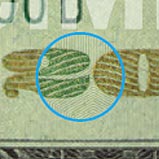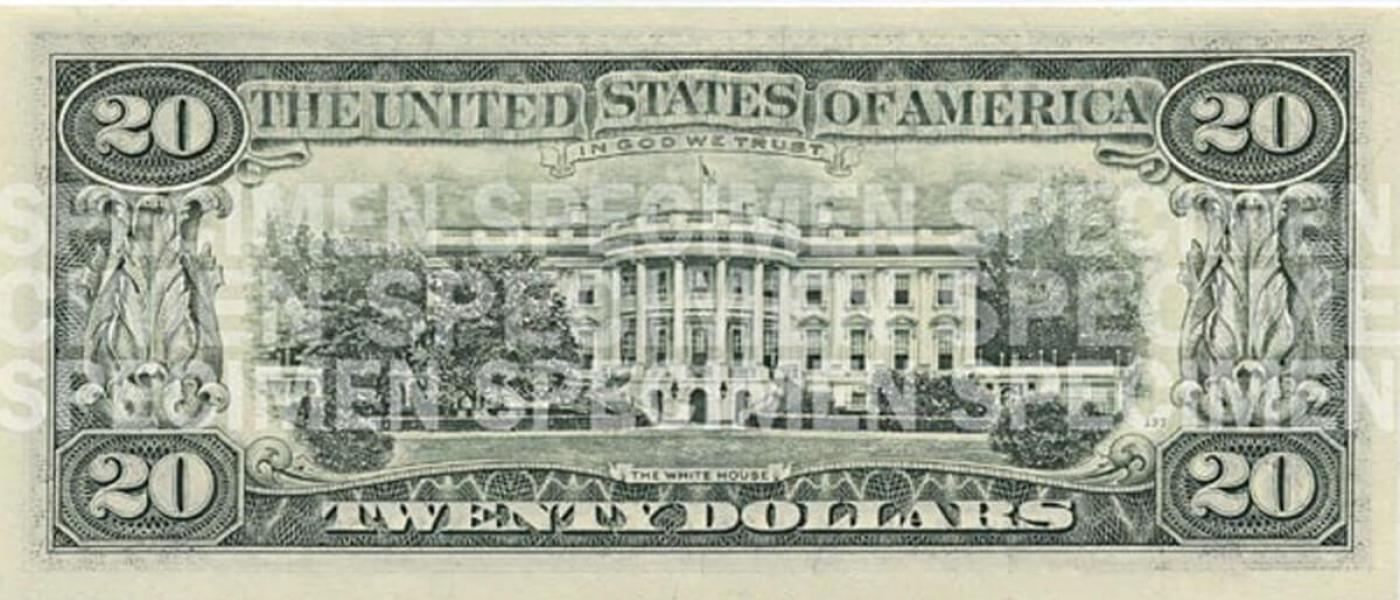Hold the note to light to see an embedded thread running vertically to the left of the portrait. The thread is imprinted with the text USA TWENTY and a small flag in an alternating pattern and is visible from both sides of the note. The thread glows green when illuminated by ultraviolet light.

Hold the note to light and look for a faint image of President Jackson in the blank space to the right of the portrait. The image is visible from both sides of the note.

Tilt the note to see the numeral 20 in the lower right corner of the front of the note shift from copper to green.
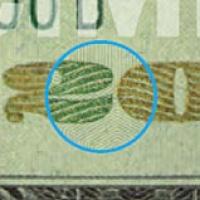
Hold the note to light to see an embedded thread running vertically to the left of the portrait. The thread is imprinted with the text USA TWENTY and a small flag in an alternating pattern and is visible from both sides of the note. The thread glows green when illuminated by ultraviolet light.

Hold the note to light and look for a faint image of President Jackson in the blank space to the right of the portrait. The image is visible from both sides of the note.

Tilt the note to see the numeral 20 in the lower right corner of the front of the note shift from green to black.

Hold the note to light to see an embedded thread running vertically to the left of the Federal Reserve Bank seal. The thread is imprinted with the letters USA and the word TWENTY in an alternating pattern and is visible from both sides of the note. The thread glows green when illuminated by ultraviolet light.

Look carefully (magnification may be necessary) to see the small printed words THE UNITED STATES OF AMERICA along the outer edge of the portrait’s oval frame.

A black seal to the left of the portrait bears the name of the distributing Federal Reserve Bank.

Move your finger along the note’s surface to feel the raised printing, which gives genuine Federal Reserve notes their distinctive texture.

Federal Reserve note paper is one-fourth linen and three-fourths cotton, and contains red and blue security fibers.

The portrait and vignette was changed in 1929 to feature President Jackson on the front of the note and the White House on the back of the note.

A seal to the right of the portrait represents the U.S. Department of the Treasury. The design of the seal was changed to incorporate an English inscription and appears on all Federal Reserve notes of the 1969 series year or later.


A black seal to the left of the portrait represents the entire Federal Reserve System. A letter and number beneath the left serial number identifies the distributing Federal Reserve Bank.

Look carefully (magnification may be necessary) to see the small printed text USA20 along the border of the first three letters of the blue TWENTY USA ribbon to the right of the portrait and THE UNITED STATES OF AMERICA 20 USA 20 in black in the border below the Treasurer’s signature.

Move your finger along the note’s surface to feel the raised printing, which gives genuine Federal Reserve notes their distinctive texture.

Federal Reserve note paper is one-fourth linen and three-fourths cotton, and contains red and blue security fibers.

The note includes background colors of green and peach. The words TWENTY USA have been printed in blue in the background to the right of the portrait.

The $20 note features a portrait of President Jackson on the front of the note and a vignette of the White House on the back of the note.

The large blue eagle in the background to the left of President Jackson’s portrait is representative of those drawn and sculpted during his time period. The smaller metallic green eagle to the lower right of the portrait is a more contemporary engraving.

A large green numeral 20 in the lower right corner on the back of the note helps those with visual impairments distinguish the denomination.
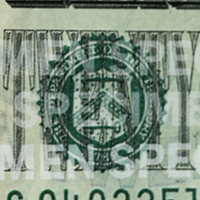
A green seal to the right of the portrait represents the U.S. Department of the Treasury.

A unique combination of eleven numbers and letters appears twice on the front of the note.

The design includes series years 2004, 2004A, 2006, 2009, and 2013.

A black seal to the left of the portrait represents the entire Federal Reserve System. A letter and number beneath the left serial number identifies the distributing Federal Reserve Bank.

Look carefully (magnification may be necessary) to see the small printed text USA20 repeated within the numeral in the lower left corner on the front of the note and THE UNITED STATES OF AMERICA along the lower edge ornamentation framing the portrait.

Move your finger along the note’s surface to feel the raised printing, which gives genuine Federal Reserve notes their distinctive texture.

Federal Reserve note paper is one-fourth linen and three-fourths cotton, and contains red and blue security fibers.

The $20 note features a portrait of President Jackson on the front of the note and a vignette of the White House on the back of the note.

A large green numeral 20 in the lower right corner on the back of the note helps those with visual impairments distinguish the denomination.

A green seal to the right of the portrait represents the U.S. Department of the Treasury.

A unique combination of eleven numbers and letters appears twice on the front of the note.

The design includes series years 1996, 1999, and 2001.

A black seal to the left of the portrait which bears the name and corresponding letter of the distributing Federal Reserve Bank.

A green seal to the right of the portrait represents the U.S. Department of the Treasury.

Move your finger along the note's surface to feel the raised printing, which gives genuine Federal Reserve notes their distinctive texture.

Federal Reserve note paper is one-fourth linen and three-fourths cotton, and contains red and blue security fibers.

The $20 note features a portrait of President Jackson on the front of the note and a vignette of the White House on the back of the note.

A unique combination of eleven numbers and letters appears twice on the front of the note.

The design includes series years 1990, 1993, and 1995.
The $20 note features subtle background colors of green and peach. The $20 note includes an embedded security thread that glows green when illuminated by UV light. When held to light, a portrait watermark of President Jackson is visible from both sides of the note.The note includes a color-shifting numeral 20 in the lower right corner of the note.

Downloads

Place this card by the register to remind you of ways to quickly and discreetly check if a banknote is real.
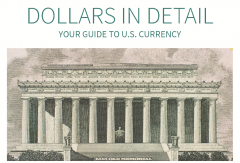
Refer to this comprehensive guide for in-depth technical information on U.S. currency.

These printable coloring sheets of denominations $1, $2, $5, $10, $20, and $100 are intended for children, parents, and teachers.

This brochure contains information about how to recognize and use security features in the $20 note. It unfolds into a poster that can be displayed in a breakroom or at a point of sale.

The Quick Reference Guide is a comprehensive resource on the security and design features of U.S. currency. This item unfolds and can be displayed next to a point of sale as an easy-to-use reference.

This 12-page booklet contains detailed information about the security and design features in the redesigned $100 note and those in the current-design $5, $10, $20, and $50 notes.

This poster features the security features in the redesigned $100 note and those in the current-design $5, $10, $20, and $50 notes.

This comprehensive guide includes technical information on the security and design features of the current-design $5, $10, $20, $50, and $100 notes.




